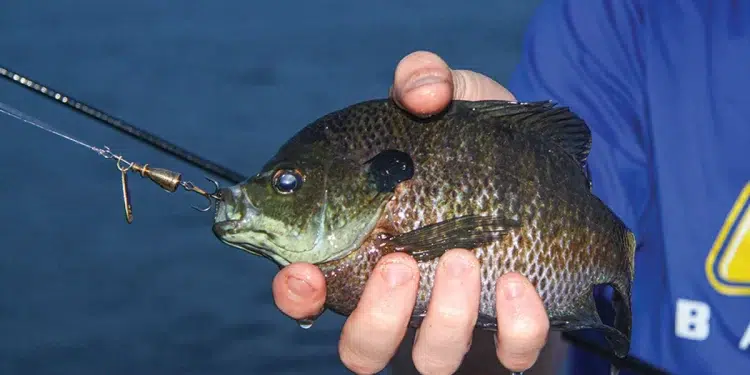Know the risks before eating your catch—it is possibly contaminated with chemicals.
A peer-reviewed study released last March by the Environmental Working Group (EWG), an environmental advocacy organization, has been making waves rough enough to rattle a T-top. Titled “Locally caught freshwater fish across the United States are likely a significant source of exposure to PFOS and other perfluorinated compounds,” its authors draw the conclusion that a single serving of freshwater fish per year could be equal to a month of drinking water laced with the “forever chemical” PFOS at high levels that can be harmful to humans. It’s important to understand fishing contamination risks and how they impact your health.
It’s scary stuff when you really dig into the data, but let’s backtrack for a minute first. It should come as little surprise that wild-caught “sweet water” species across the U.S. could harbor a variety of potentially harmful chemicals in their systems. Warnings about eating fish that may be contaminated with toxins that find their way into our watersheds through various avenues, including road runoff and airborne entry, stretch back decades and cover harmful chemicals like mercury, chlordane, and PCBs. These advisories, generally posted on Department of Health and state fish and wildlife agency websites, are designed to help anglers make educated choices about eating the fish they catch. Usually, they are specific to select fish species in certain waters that have been found to contain contaminants at levels of concern. Rather than a prohibition on eating fish, these are warnings—sometimes strongly stated—that fall short of forbidding anglers from consuming their catch.
Tips to Mitigate Fishing Contamination Risks for Safe Eating
There are ways to mitigate consumption risks by making carefully considered choices. Many toxins, mercury for example, work their way up the food chain. In such cases, younger, smaller fish may be less contaminated than larger or older predator species that eat them and accumulate the chemicals consumed. Thus, adult largemouth bass and pike, which many anglers release for conservation reasons anyway, may be more contaminated than a small yellow perch, bluegill, pumpkinseed sunfish, or juvenile crappie.
Subscribe Here For Regular Fishing Content
PFOS and PFAS: The ‘Forever Chemicals’ in Your Catch
Unfortunately, that logic doesn’t work with PFOS and PFAS contamination, warns Tasha Stoiber, Ph.D., a co-author of the study and an EWG senior scientist. “These chemicals, some of which scientific studies have shown may be linked to harmful health effects in humans and animals, don’t follow those guidelines,” she explains. “Although we don’t yet know why, some fish species that are smaller have greater amounts of PFOS than larger species. What we can say is that more remote locations and areas away from known sources of PFOS releases tend to show lower levels of contamination in their fish than areas that have greater population centers or are nearer to industrial releases and known PFOS contamination points.”
PFAS are a family of synthetically produced, highly fluorinated chemicals that remain persistent and resistant to breaking down once released into the environment, hence the nickname “forever chemicals.” They are often used in stain treatments and waterproofing applications. PFOS, which are no longer manufactured in the U.S., were used by the plating industry as part of a recommended practice to effectively control air emissions of chromium. They are part of the PFAS family.
It should also be noted that freshwater fish are an important source of protein for many people, and PFAS contamination threatens those who cannot afford to purchase commercial seafood which, some studies have shown, have little PFAS exposure. “Communities that depend on fishing for sustenance and for traditional cultural practices are inordinately harmed, especially in urban or more industrial areas where PFAS contamination seems to be most prevalent. It’s the ultimate social injustice,” write the study’s authors.
“Knowing all of this, would you eat a healthy-looking freshwater fish from a seemingly unpolluted lake which has yet to be tested for PFAS contamination?” I asked Stoiber.
“That’s a good question,” she said, hesitating slightly to mull over her answer. “I might not,” she replied.
Editor’s note: To view the EWG study, visit ewg.org/news-insights/news-release/2023/01/ewg-study-eating-one-freshwater-fish-equals-month-drinking.
-by Tom Schlichter














